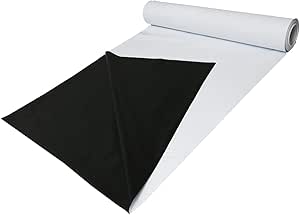When setting up a grow room, one of the most important considerations is maximizing the efficiency of your grow lights. Black and white reflective film, also known as panda film, is a popular choice for lining grow room walls and floors to increase light reflectivity and control humidity. However, like any product, it has its advantages and disadvantages. Let’s explore the pros and cons of using black and white reflective film in your grow room.

Pros of Using Black and White Reflective Film
Increased Light Reflectivity: The white side of the film reflects light from your grow lights, ensuring that more light reaches your plants. This can lead to improved plant growth and higher yields.
Light Blocking: The black side of the film acts as a light barrier, blocking 100% of light from entering or leaving the grow room. This is essential for maintaining a controlled light environment and preventing light leaks.
Waterproof and Durable: The film is made from a heavy-duty, waterproof, and light-proof material that can withstand sun exposure for over 2 years. It is also puncture and scrape resistant, making it durable for long-term use.
Versatile: Panda film can be used in various horticulture and agricultural applications, such as making nursery grow bags, catching water on the floor, or cutting to fit flower pots. It can be taped or tacked directly to walls, floors, roofs, or windows, making it easy to install in different grow room setups.
Cons of Using Black and White Reflective Film
Initial Cost: While panda film is generally affordable, the initial cost of purchasing enough film to cover your grow room walls and floor can be higher compared to other options like paint or mylar sheets.
Installation Time: Properly installing panda film in a grow room can be time-consuming, as it requires carefully measuring, cutting, and securing the film to ensure a tight fit and prevent light leaks.
Maintenance: Over time, panda film can accumulate dust and debris, which can reduce its reflectivity. Regular cleaning is necessary to maintain optimal light reflection.
Disposal: When the film reaches the end of its lifespan, it will need to be disposed of properly, which may require special handling due to its light-blocking properties.
In conclusion, black and white reflective film can be a valuable tool for improving the efficiency of your grow room lighting. However, it’s essential to weigh the pros and cons and consider your specific needs and budget before deciding if panda film is the right choice for your grow room setup.